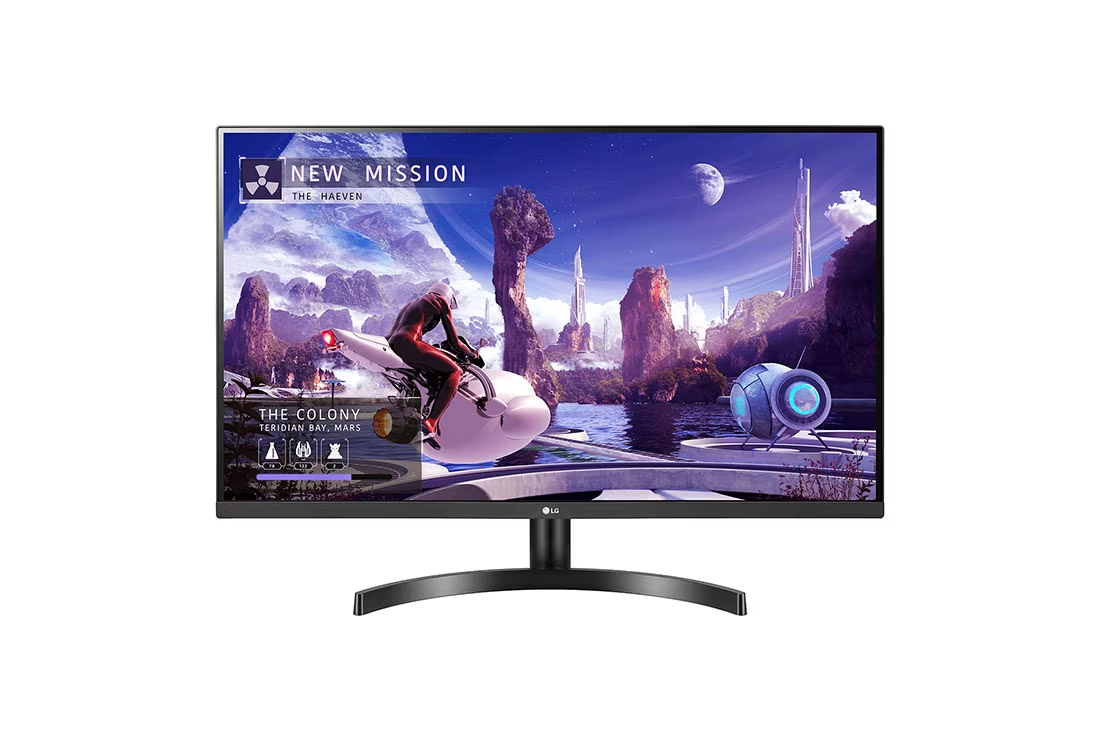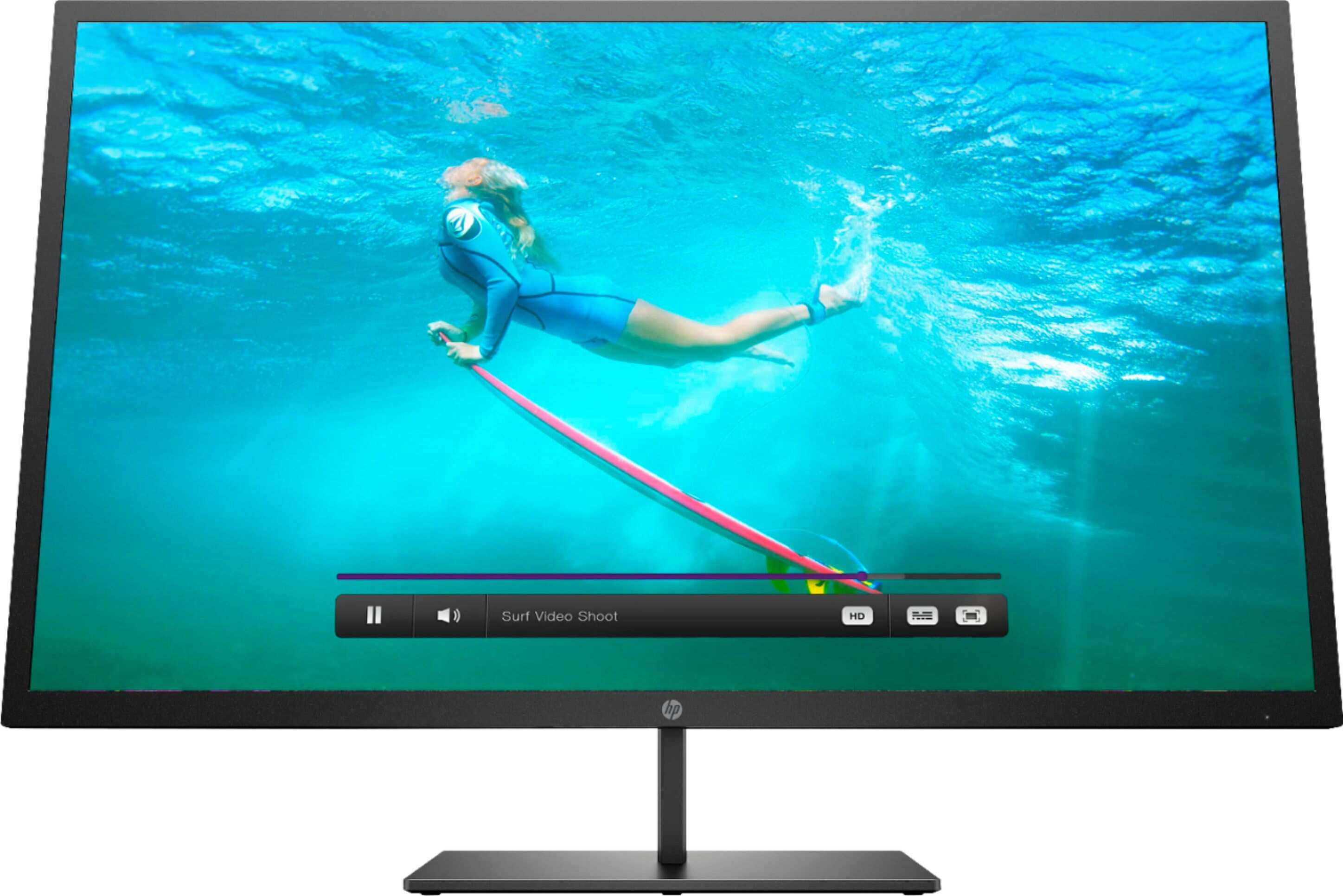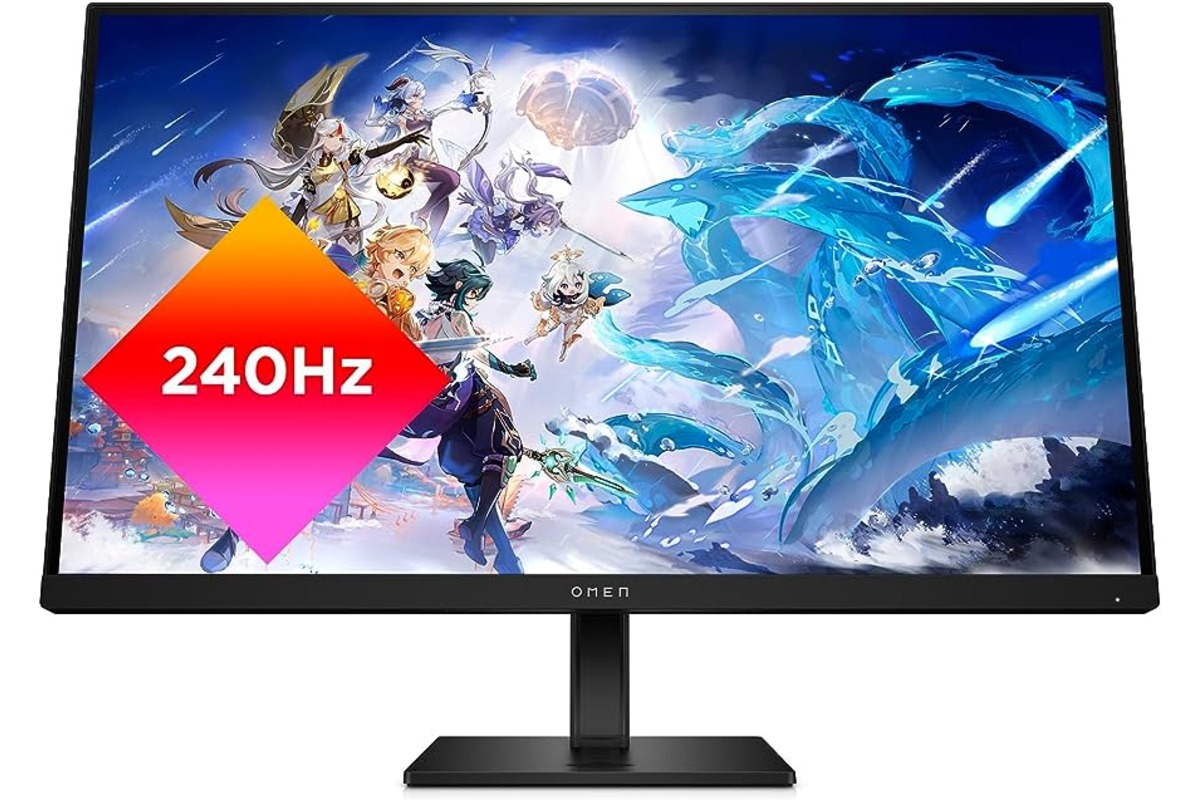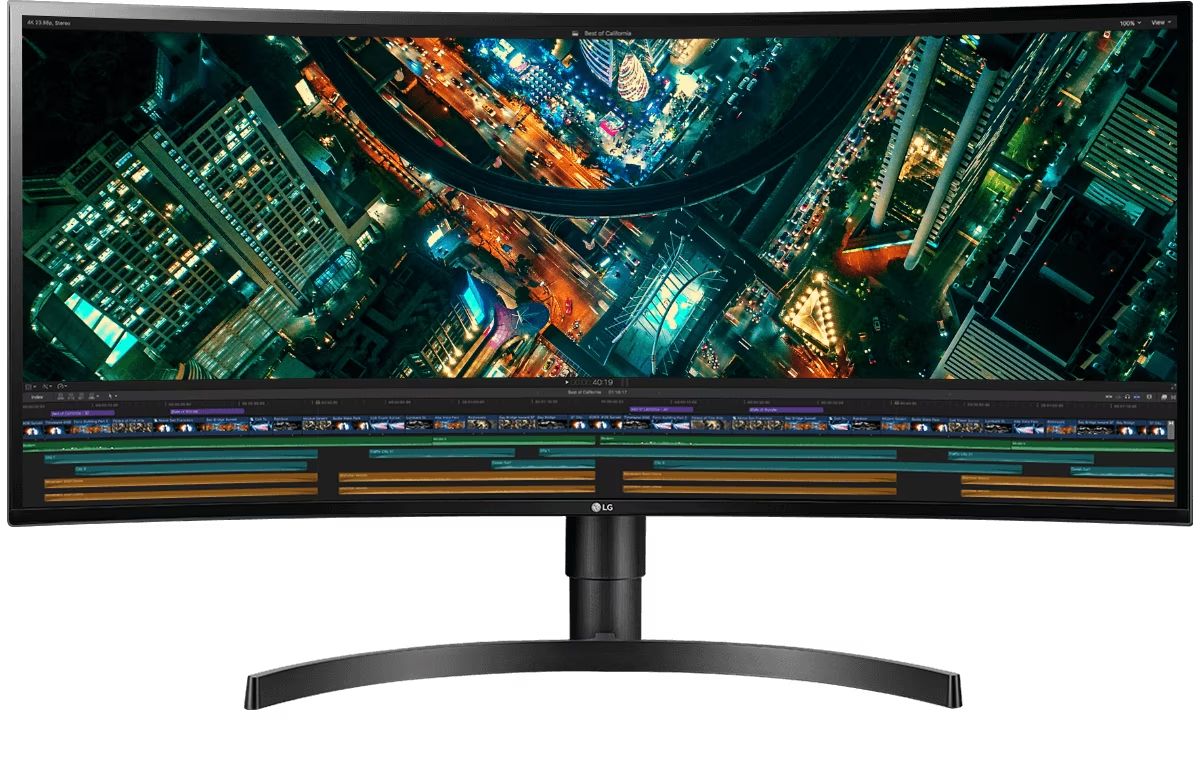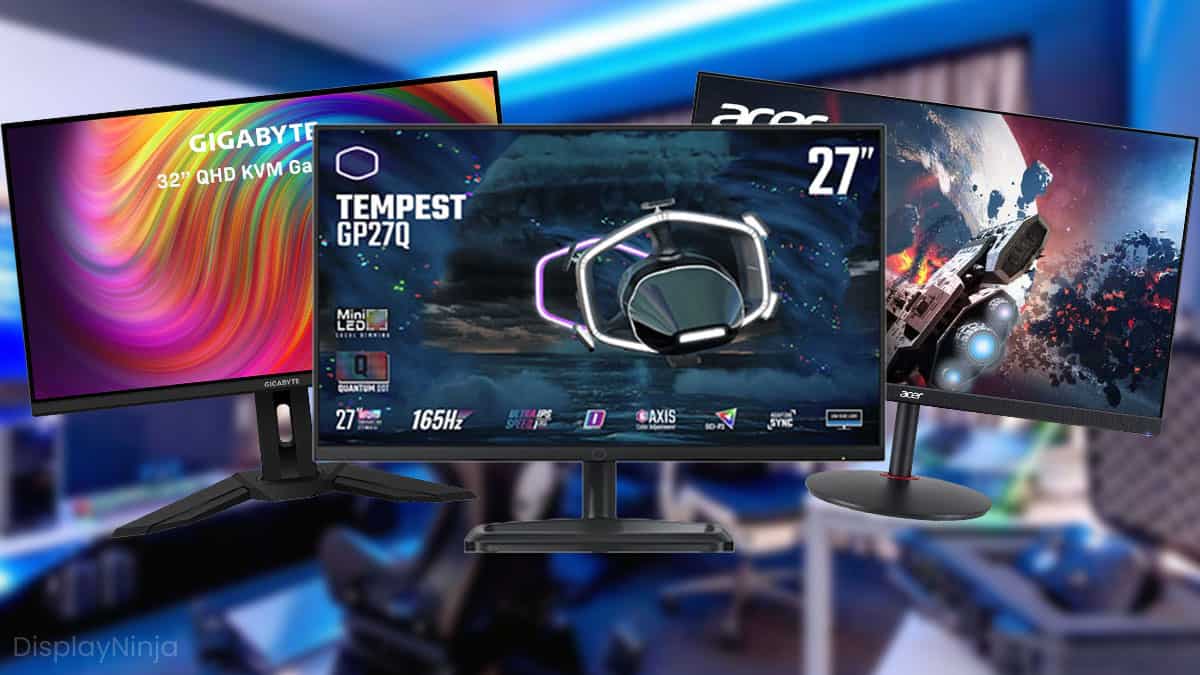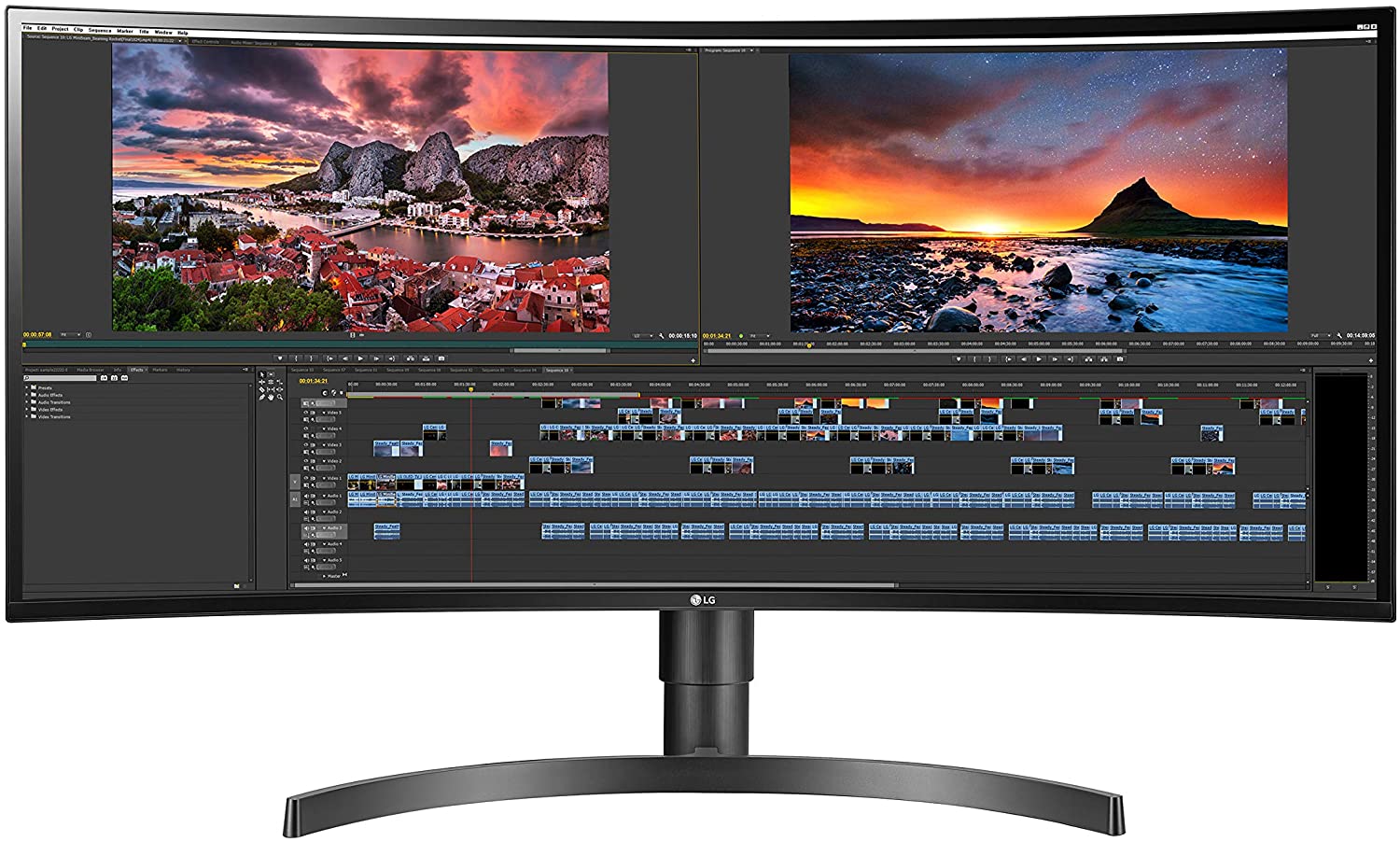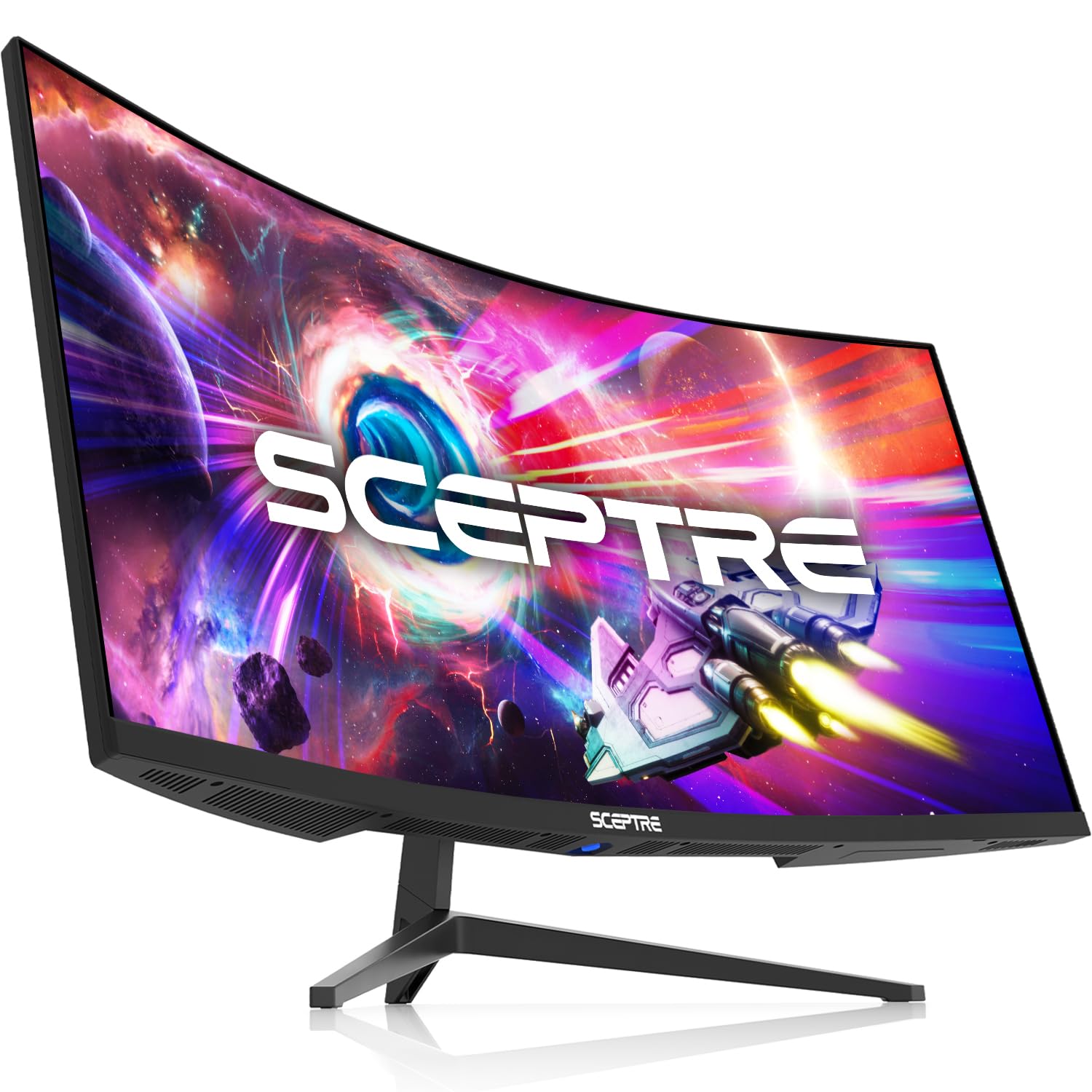Introduction
As technology continues to advance, so do our expectations for high-quality displays. Whether you’re a gamer, a designer, or a professional seeking enhanced productivity, the resolution of your monitor plays a crucial role in determining the clarity and detail of the visuals you see on your screen. While Full HD (1080p) has been the standard for many years, another resolution has been making waves in the market – QHD.
QHD, or Quad High Definition, is a resolution that offers four times the number of pixels compared to Full HD. With a resolution of 2560×1440, QHD provides stunning visual clarity and detail, bringing images, videos, and games to life with vibrant colors and sharpness. In this article, we will delve into the world of QHD monitors and explore their benefits, applications, and how to choose the right one for your needs.
So, what sets QHD apart from other resolutions? Firstly, QHD provides a significantly higher pixel density, resulting in sharper and more detailed images. This is particularly noticeable when compared to lower resolutions, as QHD offers better clarity, making it ideal for professional tasks such as photo editing, graphic design, and video production.
Furthermore, QHD monitors are not only about visual quality, but also about improved screen real estate. With a higher resolution, you can fit more content on your screen without compromising on clarity. This makes multitasking a breeze, allowing you to have multiple windows or applications open side by side without the need to constantly switch between them.
Another notable advantage of QHD monitors is their compatibility with gaming. Whether you’re a casual gamer or a competitive enthusiast, QHD can significantly enhance your gaming experience. The increased resolution provides a more immersive gameplay environment, allowing you to see every detail of the game world with greater depth and clarity. Additionally, many QHD monitors boast high refresh rates and fast response times, reducing motion blur and input lag for a smoother gaming experience.
Overall, QHD monitors offer a range of benefits that cater to various needs and preferences. Whether you’re a creative professional, a gamer, or someone who simply appreciates stunning visual quality, investing in a QHD monitor can elevate your computing experience to a whole new level.
What Is QHD?
QHD, short for Quad High Definition, is a display resolution that surpasses the standard Full HD (1080p) resolution. It offers a higher pixel count, allowing for sharper and more detailed images on the screen. QHD has a resolution of 2560×1440 pixels, effectively providing four times the pixel density of 720p.
The increased pixel count of QHD results in a significant improvement in image quality. It offers a clearer and crisper display, enhancing the overall visual experience. Whether you’re watching movies, playing games, or editing photos, QHD brings out the finer details of the content, allowing you to see every nuance with greater fidelity.
One of the key advantages of QHD is the level of detail it offers. With the higher resolution, individual pixels become smaller, leading to a higher pixel density. This increased density renders sharper edges and more intricate details, resulting in a more realistic and immersive visual experience.
QHD also provides a broader color gamut than lower resolution displays. This means that it can display a wider range of colors, ensuring accurate color representation and vibrant visuals. Whether you’re a graphic designer, photographer, or video editor, QHD monitors offer a more accurate color reproduction, allowing you to work with precision and confidence.
It’s essential to note that QHD is distinct from 4K Ultra HD, another high-resolution display format. While 4K Ultra HD has a higher pixel count and therefore offers even sharper visuals, QHD still provides a significant improvement over standard Full HD. This makes it a more affordable and practical choice for users who want enhanced image quality without the need for 4K-level detail.
Overall, QHD is a resolution that strikes a balance between affordability and improved visual quality. It offers a noticeable upgrade over standard Full HD displays, providing clearer, crisper, and more detailed images. With its higher pixel density and broader color gamut, QHD is an excellent choice for those seeking a more immersive and enjoyable viewing experience.
Benefits of QHD Monitors
QHD monitors offer numerous benefits that make them an attractive choice for professionals, gamers, and everyday users alike. Let’s explore some of the key advantages of using QHD monitors:
- Enhanced Visual Clarity: The higher pixel density of QHD monitors ensures sharper and more detailed visuals. Whether you’re editing photos, designing graphics, or watching movies, QHD brings out the finer details, resulting in a more immersive and enjoyable viewing experience.
- Improved Productivity: With their higher resolution, QHD monitors provide increased screen real estate. This means you can fit more content on the screen without sacrificing clarity. This makes multitasking more efficient, allowing you to have multiple windows open side by side, making work and productivity tasks more streamlined.
- Accurate Color Representation: QHD monitors often come with a wider color gamut compared to standard Full HD displays. This enables more accurate color reproduction, crucial for professionals working in graphic design, photo editing, and video production. The ability to see colors more accurately allows for precise editing and ensures that the final product appears as intended.
- Enhanced Gaming Experience: QHD monitors provide a more immersive gaming experience. The higher resolution and pixel density offer greater detail and clarity in the game world, allowing you to see textures, objects, and characters in much greater depth. In addition, many QHD monitors boast high refresh rates and fast response times, reducing motion blur and input lag, thus enhancing the overall gaming performance.
- Enjoyment of Multimedia Content: Whether you enjoy watching movies or streaming your favorite shows, QHD monitors provide a cinematic experience with enhanced visual quality. The higher resolution ensures that every detail is captured, and colors appear vibrant and true to life.
- Future-proof Investment: As technology advances and content becomes more resolution-intensive, investing in a QHD monitor ensures that you’re ready for the future. With its higher resolution and improved visual quality, a QHD monitor will stand the test of time and continue to deliver an excellent viewing experience for years to come.
With these benefits in mind, it’s no surprise that QHD monitors have gained popularity among a wide range of users. Whether you’re a professional seeking accurate color reproduction, a gamer looking for an immersive gaming experience, or someone who simply appreciates stunning visuals, QHD monitors offer a compelling solution that caters to your needs.
Comparison with Other Resolutions
When it comes to display resolutions, it’s essential to understand how QHD compares to other commonly used resolutions. Let’s explore QHD in comparison to Full HD (1080p) and 4K Ultra HD:
- QHD vs. Full HD (1080p): One significant difference between QHD and Full HD is the pixel count. QHD offers four times the number of pixels compared to Full HD. This means that QHD displays have a higher pixel density, resulting in sharper and more detailed images. While Full HD is still a respectable resolution, QHD provides a noticeable improvement, particularly when it comes to visual clarity and fine details.
- QHD vs. 4K Ultra HD: 4K Ultra HD offers even higher resolution than QHD, with four times the number of pixels. This results in a higher pixel density and finer details. It’s important to note that 4K Ultra HD displays require more processing power and content that supports the resolution to fully take advantage of its capabilities. QHD, on the other hand, strikes a balance between enhanced visual quality and affordability, making it a more practical option for those who want improved image quality without the need for the highest level of detail.
- QHD vs. Other Common Resolutions: When compared to lower resolutions, such as HD (720p), QHD stands out as a significant upgrade. It offers more than twice the pixel count of HD, resulting in a much sharper and more detailed display. QHD also surpasses WQXGA (2560×1600) and is comparable to WQHD (Wide Quad HD), as both resolutions have the same 2560×1440 pixel count.
While 4K Ultra HD may provide even sharper visuals, QHD offers a notable improvement over lower resolutions, including Full HD and HD. QHD strikes a balance between affordability and enhanced image quality, making it a popular choice among users who want a visually immersive experience without the need for the highest resolution available.
Ultimately, the choice between QHD and other resolutions depends on your specific needs, budget, and the content you work with or consume. If you’re a professional in a visually demanding field or a hardcore gamer, 4K Ultra HD may be worth considering. However, for a majority of users, QHD offers a compelling combination of visual clarity, affordability, and compatibility with a wide range of content.
Understanding Pixel Density
Pixel density refers to the concentration of pixels per inch (PPI) on a display. It is a crucial factor in determining how sharp and detailed the images appear on a screen. Understanding pixel density is essential when comparing display resolutions, including QHD monitors.
When it comes to pixel density, the higher the value, the sharper and more detailed the images will be. QHD monitors, with their resolution of 2560×1440 pixels, offer a higher pixel density compared to lower resolutions such as Full HD (1080p) or HD (720p).
A higher pixel density means that individual pixels on the screen are smaller and closer together, resulting in a smoother and more precise representation of content. This leads to sharper edges, finer details, and improved image quality. As pixel density increases, the human eye has more difficulty discerning individual pixels, resulting in clearer visuals and a higher level of immersion.
In practical terms, this means that QHD monitors provide a significantly crisper and more detailed display compared to lower resolution displays. Whether you’re working with text, images, videos, or games, QHD’s higher pixel density ensures that everything appears sharper and more lifelike.
Pixel density also plays a role in determining the viewing distance that is optimal for a specific resolution. Higher pixel density, such as that of QHD, is best appreciated when viewed at a closer distance. This is particularly relevant for smaller screens, as the higher pixel density allows for greater detail when viewed up close.
On the other hand, as the display size increases, the pixel density may become less noticeable. For example, on larger screens or when viewed from a distance, the difference in pixel density between QHD and Full HD may be less apparent. This is why QHD monitors are often recommended for smaller displays, where the higher pixel density provides a more noticeable improvement in visual quality.
Overall, understanding pixel density is crucial in realizing the benefits of QHD monitors. With their higher pixel density, QHD displays can offer a significant improvement in image quality, delivering sharper, crisper, and more detailed visuals.
Whether you’re a professional seeking accurate color reproduction or a gamer looking for an immersive gaming experience, a QHD monitor’s higher pixel density will ensure that you can appreciate the finer details and enjoy a visually captivating experience.
QHD Monitors and Gaming
Gaming has become an incredibly popular form of entertainment, and having the right equipment can make all the difference in your gaming experience. QHD monitors have emerged as a fantastic option for gamers looking to take their gameplay to the next level. Let’s explore how QHD monitors enhance the gaming experience:
1. Immersive Visuals: QHD monitors offer a higher resolution compared to standard Full HD displays. With 2560×1440 pixels, QHD provides more screen real estate and a sharper image quality. This means you’ll be able to see more details and enjoy more immersive visuals while gaming. From the rich textures of game environments to the intricate details of character models, QHD brings the game world to life, making it even more captivating and realistic.
2. Enhanced Clarity: The increased pixel density of QHD monitors ensures sharper and more detailed images. This allows you to see the fine details in games, such as text, small objects, and distant landscapes, with greater clarity. The improved clarity can be an advantage in competitive gaming, where being able to spot enemies or tiny details can make a significant difference in your performance.
3. Fluid and Smooth Gameplay: Many QHD monitors boast high refresh rates, often 144Hz or above, and fast response times. High refresh rates result in smoother motion and reduced motion blur, allowing for more fluid and lifelike gameplay. Fast response times minimize input lag, ensuring that the actions you make with your keyboard or controller are immediately reflected on the screen. These features contribute to a more responsive and enjoyable gaming experience.
4. Greater Field of View: The increased screen real estate of QHD monitors offers a wider field of view in games. This allows you to see more of the game world at once, providing a broader perspective and granting you a tactical advantage. You can spot enemies and objects on the periphery without constantly having to move the camera, enhancing situational awareness and immersing you further into the game.
5. Compatibility and Optimization: QHD monitors are widely supported by most modern gaming systems and graphics cards. Many games are also optimized for QHD resolutions, ensuring a smooth and visually pleasing gaming experience. With QHD becoming increasingly popular, game developers are paying more attention to optimizing their titles for this resolution, making it a future-proof investment for gamers.
Whether you’re a casual gamer or a dedicated enthusiast, QHD monitors offer numerous benefits that can enhance your gaming experience. From the immersive visuals to the enhanced clarity, QHD provides a level of detail and realism that elevates your gameplay. With smoother performance, a wider field of view, and compatibility with the latest gaming systems, QHD monitors are a fantastic choice for any gamer looking to level up their gaming setup.
QHD for Productivity
While QHD monitors are often associated with gaming and visual entertainment, they also offer significant advantages for productivity tasks. Whether you’re a professional working on design projects, a content creator editing videos, or a student conducting research, QHD monitors can greatly enhance your workflow. Let’s explore how QHD monitors can boost productivity:
1. Increased Screen Real Estate: QHD monitors provide a higher resolution, allowing you to fit more content on the screen without sacrificing clarity. This means you can have multiple windows, applications, or documents open simultaneously, making multitasking more seamless. With the ability to view and work on multiple files side by side, you can easily compare information, reference sources, and cross-check details, resulting in improved efficiency and productivity.
2. Improved Clarity and Detail: The higher pixel density of QHD monitors ensures sharper and more detailed visuals. This level of clarity is especially beneficial when working with intricate designs, texts, and images. QHD allows you to see finer details and small elements that may not be as noticeable on lower resolution displays. This is particularly valuable for professionals in fields such as graphic design, photo editing, and video production, where precision and attention to detail are paramount.
3. Accurate Color Reproduction: QHD monitors often come with a wider color gamut, resulting in more accurate color representation. This is crucial for professionals working in graphic design, web development, and any field that requires accurate color reproduction. QHD monitors allow you to see colors as they are intended, ensuring that your designs, images, and videos display accurately across different devices and platforms.
4. More Comfortable Viewing: QHD monitors offer a higher pixel density, resulting in a higher pixel-per-inch (PPI) ratio. This increased pixel density leads to a smoother image, reducing the strain on your eyes and making extended periods of work more comfortable. The sharper and clearer visuals of QHD contribute to a more pleasing and less fatiguing visual experience, allowing you to focus on your tasks for longer periods without discomfort.
5. Future-proof Investment: As resolutions continue to advance, QHD monitors serve as a future-proof investment. With many applications and content gradually optimizing for higher resolutions, having a QHD monitor ensures compatibility and future-readiness. By investing in a QHD monitor, you can continue to enjoy the benefits of improved productivity as technology progresses.
Whether you’re a professional seeking a clearer and more spacious workspace or a student looking to boost your productivity, QHD monitors deliver a significant upgrade over standard resolutions. The increased screen real estate, improved clarity, accurate color reproduction, and comfortable viewing experience contribute to a more efficient workflow and enhanced productivity.
With their versatility and ability to enhance productivity tasks, QHD monitors are an excellent choice for anyone who values efficiency and visual quality in their everyday work.
Choosing the Right QHD Monitor
When it comes to choosing a QHD monitor, there are several factors to consider to ensure you get the right one for your needs. Here are some key factors to keep in mind:
1. Screen Size: QHD monitors come in various screen sizes, ranging from 24 inches to 32 inches or more. Consider the available space on your desk and your preferred viewing distance. Larger screens offer a more immersive experience, while smaller screens provide higher pixel density. Find the right balance between screen size and pixel density that suits your preferences and work requirements.
2. Panel Technology: QHD monitors are available with different panel technologies, including Twisted Nematic (TN), Vertical Alignment (VA), and In-Plane Switching (IPS). TN panels offer faster response times, making them ideal for gaming. VA panels provide deep blacks and high contrast ratios, great for content consumption. IPS panels offer better color accuracy and wider viewing angles, making them suitable for professional tasks such as graphic design and photo editing. Choose a panel technology that aligns with your usage requirements.
3. Refresh Rate and Response Time: If you’re a gamer or work with fast-moving content, consider a QHD monitor with a high refresh rate (e.g., 144Hz or higher) and fast response time (e.g., 1ms or lower). A higher refresh rate ensures smoother motion, reducing motion blur, and providing a more responsive gaming experience. Fast response times minimize input lag, allowing for quicker and more accurate response to your actions.
4. Connectivity: Ensure that the QHD monitor you choose has the necessary connectivity options to suit your needs. Check for available input ports, such as HDMI, DisplayPort, and USB-C, to connect to your desired devices. Additional USB ports and headphone jacks can also be beneficial for convenience and accessibility.
5. Ergonomics: Consider the ergonomic features of the QHD monitor, such as adjustable stands for height, tilt, and swivel. The ability to adjust the monitor’s position ensures a comfortable viewing experience, reducing strain on your neck and eyes during long work or gaming sessions.
6. Budget: Set a budget for your QHD monitor purchase, as prices can vary depending on the features and specifications. Determine the features that are essential for your needs and find a monitor that offers the best combination of performance and value within your budget.
By considering these factors, you can choose a QHD monitor that aligns with your requirements and ensures an optimal viewing experience. Whether you’re a gamer, a designer, or a professional seeking enhanced productivity, finding the right QHD monitor will significantly enhance your visual experience and improve your overall workflow.
Conclusion
QHD monitors have become increasingly popular due to their higher pixel density and enhanced visual quality. These monitors offer numerous benefits across various domains, from gaming and entertainment to professional work and productivity tasks.
With their higher resolution and pixel density, QHD monitors deliver sharper, more detailed images, providing a visually immersive experience. The increased screen real estate allows for multitasking and improved productivity, while accurate color reproduction ensures precise design work and content creation.
In the realm of gaming, QHD monitors offer an enhanced gaming experience with immersive visuals, smoother gameplay, and a wider field of view. Whether you’re a casual gamer or a competitive enthusiast, the higher resolution and refresh rates of QHD monitors elevate your gaming performance and enjoyment.
When choosing a QHD monitor, consider factors such as screen size, panel technology, refresh rate, and connectivity options to meet your specific needs and preferences. Ergonomic features and budget considerations are also important factors to keep in mind during the selection process.
Overall, QHD monitors provide a significant upgrade over lower resolutions, offering improved image quality and a more immersive viewing experience. Whether you’re a professional, a gamer, or an everyday user, investing in a QHD monitor can elevate your computing experience and enhance your visual enjoyment.
So, if you’re ready to take your visual experience to new heights, consider investing in a QHD monitor and enjoy the stunning clarity, vibrant colors, and immersive visuals it has to offer.







